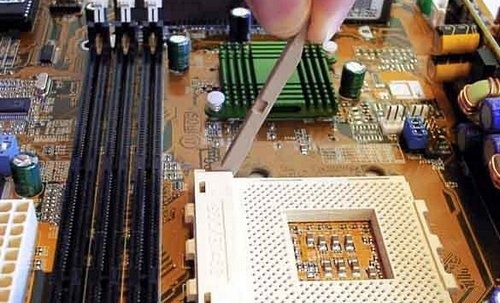One of the ideas that I lecture about in Software Engineering is the concept of how one views testing objects. You can either look at an object either in ‘black’ or ‘white’ box fashion. In the former, internal processing details are hidden and opaque, so you’re really concerned only about whether you get correct outputs based on what inputs you feed into the object. ‘White’ box viewpoints on the other hand suggest that you’re looking at the object in terms of processing and its internalized components since it’s ‘transparent’.
Now when you put it into a computer analogy; most people are really quite happy using computers as black boxes – they don’t care what goes inside a thing, as long as the thing works. For this group of users, choosing a new computer really involves just selecting from brochures an assembled system, paying for it, and waiting for the delivery guy to show up.
That’s one of the reasons why Apple operating systems and their machines have been so successful: they hide all the details behind a pretty facade, does what it’s supposed to do well, and absolves its users from having to deal with the underlining hardware. Windows operating systems took a while longer to reach the same level of abstraction, but with the newest iteration – Windows 7 – it’s finally reached parity, and in some ways may have even surpassed the Mac OS.
—

There’s a large group of users however who enjoy treating their computer systems as white boxes. These are also the same people who’re frequent patrons of Sim Lim Square, and the activity of assembling one’s own computer today is practically a hobbyist skill with a huge body of knowledge accumulated over the years from enthusiasts.
Why do people bother with it though? Well, building things is a lot of fun. Once you get past the fact that the PC components that go into a system don’t usually just cost spare change, it’s pretty much like assembling Lego bricks otherwise. Many components – whether it’s a wire, a cable, or a computer card – have distinct connectors that it’s actually hard to connect the item in the wrong way.
 There’s also a significant aesthetic perspective. Lots of enthusiasts compare notes on how they go about beautifying the internals of their computer – which interestingly also has a strong effect on how the assembled system performs.
There’s also a significant aesthetic perspective. Lots of enthusiasts compare notes on how they go about beautifying the internals of their computer – which interestingly also has a strong effect on how the assembled system performs.
Briefly, computer components contain millions of transistors. They generate a lot of heat, so one of the basic ideas that one has to learn is how air is moved inside a computer casing. Ideally, you want to create airflow in the casing that’ll take in cool air from the outside and push out hot air through exhaust. This isn’t as simple as putting huge fans into a casing and letting them rip though. You don’t want pockets of still air for one, and secondly, fans can cause a din.
And the payoff of spending a couple of hours or an evening of assembling a new computer is incredible. You often hold your breadth when you’re booting up your assembled computer for the first time – and when it boots up properly, it’s hard not to shoot your first up into the air and say “Hell yeah!!” It’s like you’re creating life.
Continued in the next post.:)
Recent comments